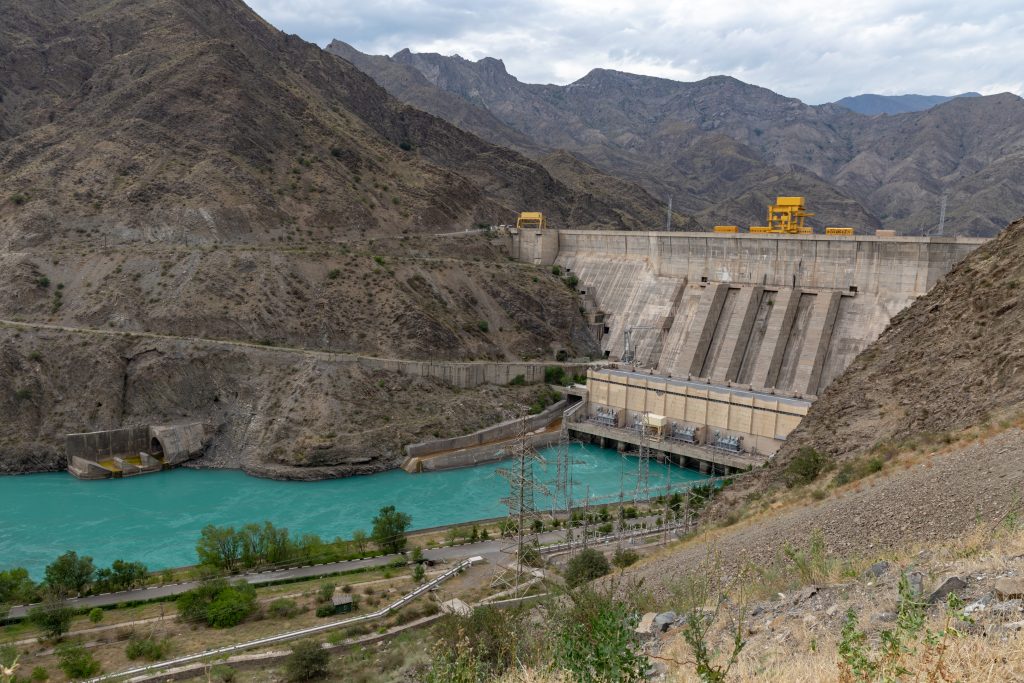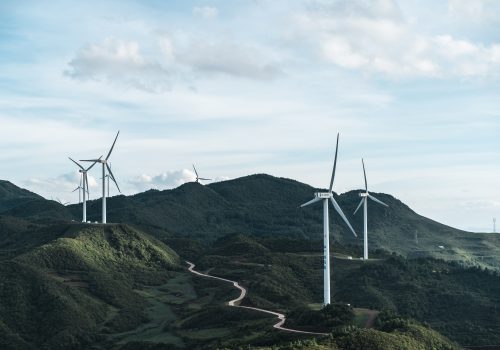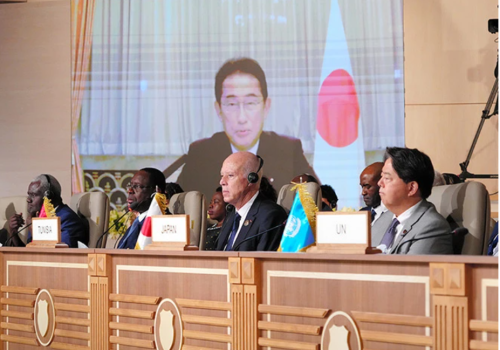Central Asia holds some of the greatest potential for hydropower in the world. The Pamir and Tien Shan mountain ranges and vast river networks that form from glacier meltwater provide numerous locations for hydroelectric dams in Central Asia. Upstream republics, including Tajikistan and Kyrgyzstan, already receive nearly 90 percent of their electricity from hydroelectric production.
However, the region has failed to harness its full hydropower potential. Tajikistan has only developed 4 percent of its total capacity, while Kyrgyzstan has exploited just 10 percent. If Tajikistan and Kyrgyzstan were to fully capitalize on their topography, they would have a surplus of electricity to export to their fossil fuel-dependent neighbors.
Several roadblocks have stalled Central Asia’s hydropower development. But through investments in Central Asia’s energy infrastructure and by fostering new dialogue on transboundary water management, the United States and European Union (EU) can help unlock much of Central Asia’s potential and forge stronger ties to the region.
Barriers to development
The majority of Central Asia’s hydropower infrastructure was built during the Soviet era and is not equipped for today’s challenges. The dated technology is unable to generate and distribute electricity at a scale needed to support rising demand in the region.
Climate change has compounded these problems. Central Asia is warming faster than most regions in the world, and recent cases of extreme heat have increased electricity demand while depleting water flows, plunging the region into darkness.
In addition, advancing new projects in Central Asia has been difficult. Historically, hydropolitics has hindered regional cooperation. Downstream republics, including Uzbekistan, Kazakhstan, and Turkmenistan are dependent on the flow of water for cotton and wheat production, which account for 5 percent of Kazakhstan’s GDP and nearly 25 percent of Uzbekistan’s. Uzbekistan’s former president even threatened the use of military force against Kyrgyzstan and Tajikistan over proposed dam projects in 2012.
A glimmer of hope
Since then, however, new leadership has engaged in more constructive dialogue on shared resources in Central Asia. This newfound willingness to cooperate has opened the door for new hydroelectric dam projects. Projects that were shelved for decades are advancing to new stages of development. The Rogun and Kambar-Ata Dams, once points of contention between upstream and downstream republics, now provide hope for Central Asia’s hydropower sector.
In 2016, Tajikistan restarted construction of the Rogun Dam, and now the early stages of the future world’s tallest dam sit on the Vakhsh River. With the technical assistance of an Italian company, Webuild, the Rogun Dam is expected to become fully operational by 2032, with a capacity of 3,600 megawatts (MW), doubling Tajikistan’s installed electrical generation capacity. Even though the project has endured significant delays, the Rogun Dam can transform the region with clean baseload energy.
The Kambar-Ata Dam is another beneficiary of the hydropolitics détente in Central Asia. In January of 2023, Kyrgyzstan, Kazakhstan, and Uzbekistan agreed to a roadmap for the project, which will have an installed capacity of 1,860 MW. Nonetheless, the project remains in the early stage of development and needs additional financing before its completion.
Pathways forward
Central Asia is trending in the right direction but must overcome several barriers before maximizing its full hydropower potential.
To mitigate cross-border disputes over new hydroelectric dams, Central Asian governments should address how to navigate the water-energy nexus. Central Asian republics should conclude new water-sharing agreements that set out clear frameworks for apportioning water between upstream hydroelectric power producers and downstream agricultural users. Greater transboundary transparency on the use of shared resources can reduce anxieties over new dam projects and help plan for contingencies in water availability. Preemptive measures can ensure the sustainable and long-term operation of hydroelectric dams in Central Asia.
Given new technology, small-scale hydropower can avoid much of the political fighting related to large-scale dams. Smaller units can be more easily deployed in existing canals and irrigation systems. This minimizes the disruption to the environment and local populations compared to large-scale units. Additionally, small-scale hydropower does not require large power lines, helping electrify rural areas in Central Asia, who tend to lack access to consistent electricity. Small-scale hydropower is not a silver bullet, but it can help expand Central Asia’s hydropower production at the margins.
To fully capitalize on its clean energy potential, however, Central Asia should continue to develop large-scale hydropower projects. Financing new projects remains a key challenge. Development institutions, such as the World Bank and Asian Development Bank, have offered support, but more is needed.
For decades, Russia has been closely linked to Central Asia’s energy system, but President Vladimir Putin’s invasion of Ukraine has motivated Central Asian governments to hedge their dependency on Moscow. New partners–China and the EU–see Russia’s isolation as an opportunity to gain new inroads into the region through energy investments.
China has avoided entering into the region’s historically fractious hydropolitics by investing downstream in Uzbekistan and Kazakhstan, both significant hydrocarbon exporters. At a recent summit with Central Asian leaders, Beijing expressed continued commitment to oil and gas investment in the region. The EU, which now accounts for 42 percent of Central Asia’s total foreign direct investment, has also taken a greater interest in the region, hoping to reduce the region’s reliance on Russian energy and counter China’s Belt and Road Initiative.
Interest from international partners is geopolitical in nature. However, if the United States and EU force Central Asian republics to choose a side in a larger geopolitical contest, they could be less receptive to new investments with strings attached and move closer to Russia and China. Instead, Western nations should focus on how investments can accelerate the region’s energy transition, thereby reducing demand for Russian hydrocarbons and strengthening Central Asia’s energy security.
Central Asia’s untapped potential for hydropower presents a unique opportunity for the region and for many Western nations. With greater international assistance and a pragmatic approach that addresses the root of the water-energy nexus, external partners can help Central Asia overcome barriers to development, strengthen collaboration, and support the region’s clean energy transition.
Maxwell Zandi is a young global professional at the Atlantic Council Global Energy Center.
Learn more about the Global Energy Center

The Global Energy Center develops and promotes pragmatic and nonpartisan policy solutions designed to advance global energy security, enhance economic opportunity, and accelerate pathways to net-zero emissions.
Image: Toktogul Dam in Kyrgyzstan. (Ninara, Flickr, CC BY 2.0) https://creativecommons.org/licenses/by/2.0/




